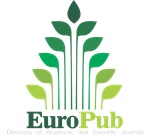Impact of Boric Acid on Photocatalytic Oxidation
DOI:
https://doi.org/10.22373/ekw.v2i1.680Keywords:
greywater reuse, photocatalytic oxidation, inhibition, boric acid,Abstract
Greywater reuse is considered as one solution in solving water scarcity problem in the world because it is less contagious and less polluting to environment than the entire municipal wastewater. Greywater is easier to treat and reuse it. One possibility to treat greywater is using constructed wetland followed by an advanced oxidation process such as photocatalytic oxidation. This process removes organic materials in waste water by oxidation via hydroxyl radicals. There was discussion about the effects of the solution inorganic matrix such as borate on the photocatalytic oxidation. Borate a common constituent of greywater was reported to inhibit photocatalytic oxidation. This research tried to determine the effect of boric acid on photocatalytic oxidation spiked with boric acid in concentration of 5 to 200 mg/L using aqueous TetraEGDME solutions. It was found that there is no inhibition of photocatalytic oxidation process when boric acid is present and pH is acidic (about 4-5).References
Dhas, P., Gulyas, H. and Otterpohl, R. (2015) Impact of Powdered Activated Carbon and Anion Exchange Resin on Photocatalytic Treatment of Textile Wastewater. Journal of Environmental Protection, 6, 191-203. doi: 10.4236/jep.2015.63020.
Ericksson, Henrik R. Andersen, Toke S. Madsen, Anna L. (2009) Greywater pollution variability and loadings. Ecological Engineering, Volume 35, Issue 5, May 2009, Pages 661–669.
Gulyas H., Solar (2014) Heterogeneous Photocatalytic Oxidation for Water and Wastewater Treatment: Problems and Challenges. Journal of Advanced Chemical Engineering
Li, Z., Gulyas, H., Jahn, M., Gajurel, D. R. & Otterpohl, R. (2003) Greywater treatment by constructed wetland in combination with TiO2-based photocatalytic oxidation for suburban and rural areas without sewer system. Water Sci. Technol. 48(11), 101–106.
Otterpohl, R., Albold, A. & Oldenburg, M. (1999) Source control in urban sanitation and waste management: ten systems with.
Rivero, M.J., Parsons, S.A., Jeffrey, P., Pidou, M., Jefferson, B., (2006) Membrane chemical reactor (MCR) combining photocatalysis and microfiltration for grey water treatment. Water Sci. Technol. 53, 173e180
Schmelling, D.C., Gray, K.A., Vamat, P.V., (1997) The influence of solution matrix on the photocatalytic degradation of TNT in TiO2 slurries. Water Res. 31, 1439e1447.
Downloads
Published
Issue
Section
License
Proposed Policy for Journals That Offer Open Access Authors who publish with the Elkawnie journal agree to the following terms:
a. Authors retain copyright and grant the journal right of first publication with the work simultaneously licensed under a Creative Commons Attribution License that allows others to share the work with an acknowledgement of the work's authorship and initial publication in this journal.
b. Authors are able to enter into separate, additional contractual arrangements for the non-exclusive distribution of the journal's published version of the work (e.g., post it to an institutional repository or publish it in a book), with an acknowledgement of its initial publication in this journal.
c. Authors are permitted and encouraged to post their work online (e.g., in institutional repositories or on their website) prior to and during the submission process, as it can lead to productive exchanges, as well as earlier and greater citation of published work (see The Effect of Open Access).

























